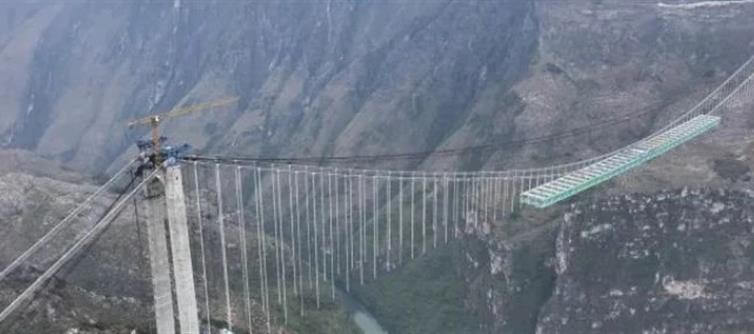
Where is the World's Tallest Bridge located?
The construction of the Huajiang Canyon Bridge cost roughly $283 million. Remarkably, the bridge is almost 300 feet higher than One World Trade Center, the tallest structure in the United States, which stands 1,776 feet tall. The Duge Bridge, now the world's tallest bridge at 1,854 feet, will be surpassed as the new tallest bridge when the Huajiang Canyon Bridge opens for traffic. It's interesting to note that china, which appears to be winning the award for the most record-breaking structures, also has the Duge Bridge.
How much taller is it compared to the US World Trade Center?
Overlooking the Huajiang Valley in southwest Guizhou, china, work on the Huajiang Canyon Bridge began in 2022. At the bottom of the canyon, the bridge will span over the Beipan River. When the Huajiang Canyon Bridge is finished, it will only take three minutes to cross the valley instead of an hour!
How long did it take to complete the Construction?
Although building at such extreme heights is difficult, professor Mamdouh El-Badry, a civil engineering expert at the university of Calgary, told Newsweek that the bridge was constructed much more quickly than other bridges at lower heights, proving its ability and efficiency. According to El-Badry, "In other parts of the world, a project of this scale would typically take five to 10 years from groundbreaking to completion, depending on environmental, political, and logistical factors."
What was the total cost of building this engineering marvel?
China continues to lead the globe in the construction of the tallest bridges. All six of the world's tallest bridges are located in China. Currently, china is home to 43 of the world's 50 tallest bridges. Out of the 50 tallest bridges worldwide, there are just three in the United States.
China's rugged terrain, particularly in the west and southwest, is a major contributing cause to its domination. An excellent illustration is the province of Guizhou. Building conventional highways across deep valleys and rough terrain is not feasible when traveling long distances throughout Guizhou or other mountainous areas of China. Bridge construction is therefore the sole means of facilitating transit, creating quicker and more direct routes, or advancing the development of these isolated regions.
"The completion of the Huajiang Grand Canyon Bridge will strengthen economic ties between Guiyang, Anshun, and Qianxinan, fostering regional economic integration," said Chen Jianlei, deputy director of the Guizhou Transport Department, in a statement, according to Newsweek.




 click and follow Indiaherald WhatsApp channel
click and follow Indiaherald WhatsApp channel